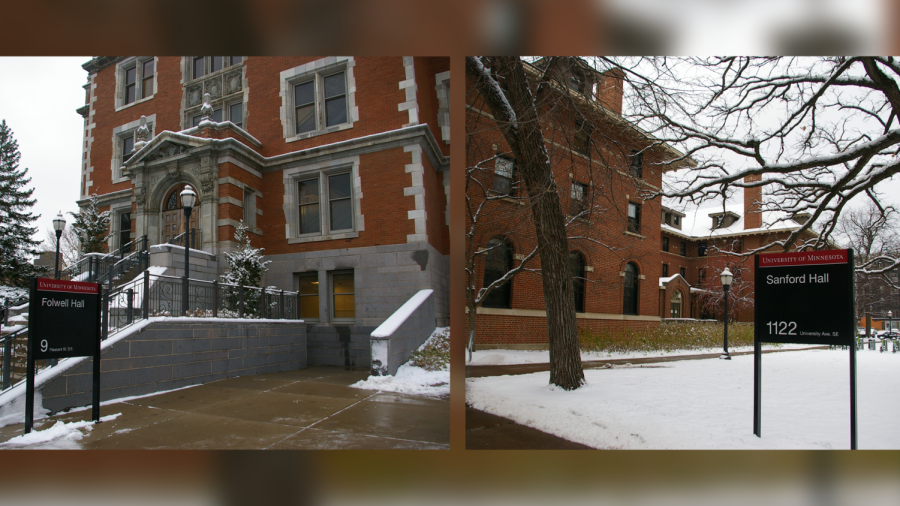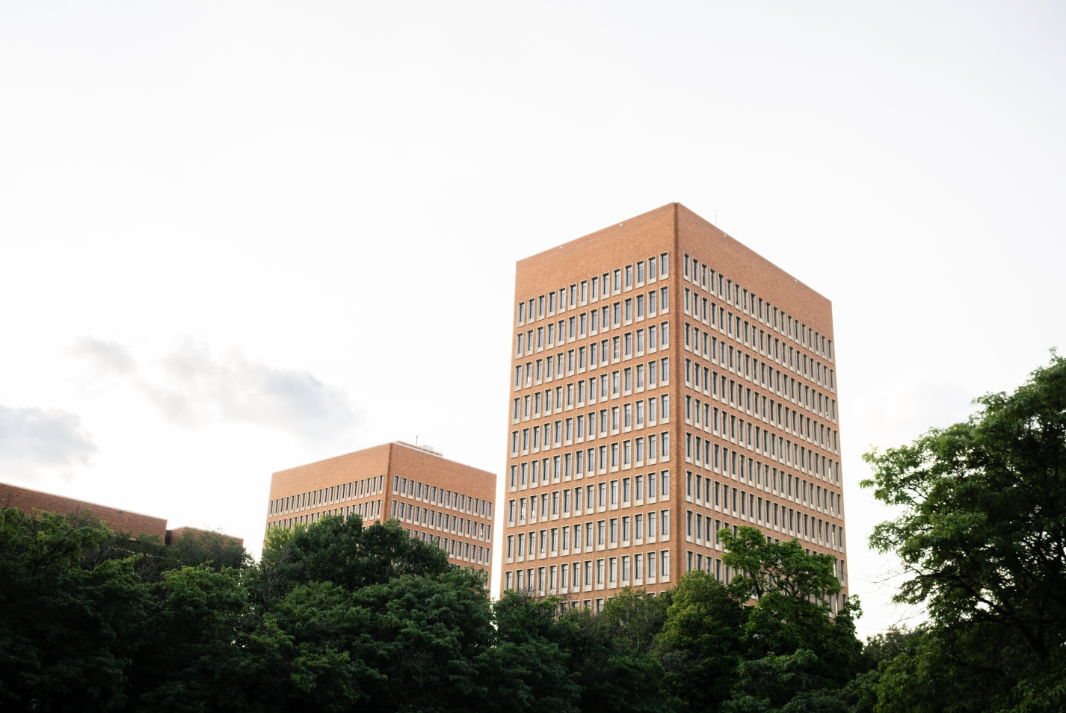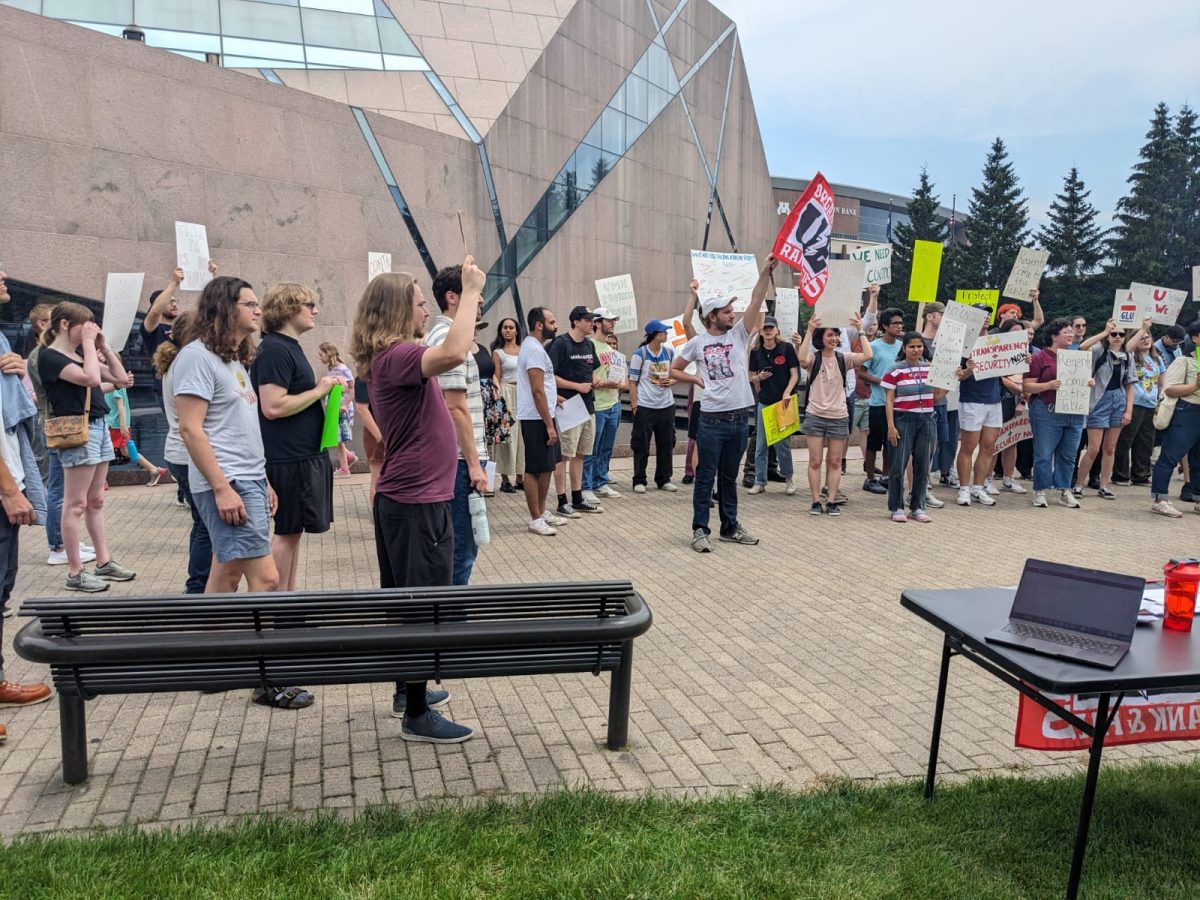The process to rename the University of Minnesota’s four oldest building names is underway after applications to nominate new namesakes or request retaining a name closed Nov. 11.
While the Kiehle Building on Crookston’s campus, Spooner Hall on the Morris campus and Sanford Hall on the Twin Cities campus each received applications to retain their names, Folwell Hall did not receive an application for retainment or a new name.
The building renaming application, or dossier, opened to faculty, staff and alumni in August. A dossier can be submitted to either request a new name or to request the University retain the building’s current name.
“Although we have had inquiries about [Folwell Hall], no one came forward and put a dossier into our hands,” said Tim Johnson, chair of the All-University Honors Committee (AUHC), which manages the renaming process.
On the Morris campus, the faculty assembly will vote on Nov. 29 whether to rename Spooner Hall. On the Twin Cities campus, the policy for the non-dossiered Folwell Hall is to remove the name without a replacement.
“The Board of Regents could say the recommendation now for…Folwell hall is to remove the names, and we just call them building X,Y or Z, or whatever departments are in those buildings,” Johnson said.
The Board of Regents could also refuse name removal and decide to keep the names as they stand, according to Johnson.
The renaming process
The Board of Regents approved new updates to a University policy, which allows for renaming campus buildings that are at least 75 years old on Feb. 11.
The University decided to consider renaming the four oldest building names first, according to Jonhnson, and then will work their way to the buildings at the 75-year cut off.
Now that applications are closed, the Namings and Renamings Work Group (NRWG) will review them and decide how to move forward. NRWG is a subgroup of AUHC and could recommend to either rename the buildings or keep the current names.
NRWG members consist of faculty, students, alumni, the University’s archivist and a University historian.
“We have people involved who can really delve into why a name might need to be changed and why a name might need to stay,” Johnson said.
After reviewing renaming applications, the NRWG will refer their recommendations to the AUHC, which discusses them and makes their own recommendations to University President Joan Gabel. Gabel will then make recommendations to the Board of Regents, who will ultimately vote on whether to rename the buildings.
Although neither the AUHC or NRWG know how long the process is going to take, Johnson said he expects at least four buildings to be renamed each year.
William Watts Folwell (1833-1929), the first University President
Folwell Hall, deemed “the largest, best and most imposing building on the University campus,” according to University archives, was constructed in 1907 after a fire destroyed the Old Main Building in 1904. According to the Minnesota architecture history inventory form in 1908, it was pronounced the best building for educational purposes in the country.
When Folwell was built, it housed the Greek, Latin, mathematics, astronomy, English, philosophy and sociology departments. It also housed the offices of the Minnesota Daily, the Gopher, the Minnesota Magazine and the Post Office.
Now, Folwell Hall houses the College of Liberal Arts language departments along with offices and study spaces.
Folwell Hall was named after the first University president, William Folwell. Before becoming president, Folwell served in the 50th New York regiment of Volunteers in the Civil War where he rose to the rank of Brevet Lieutenant-Colonel of Engineers from 1862 to 1865, according to University records.
In 1869, Folwell became University president after teaching economics and politics at Kenyon College in Ohio.
In addition to president, Folwell served as University Librarian from 1869 to 1903. After Folwell resigned as the University president in 1883, he became chair of the political science department, where he remained until his retirement in 1907.
Maria Sanford (1836-1920), the first female professor
When the first women’s dormitory opened on campus in 1910, it was named after Maria Sanford. While now co-ed, Sanford Hall has kept her name.
When Sanford Hall was first built in 1910, it could house up to 80 female students. Now, more than 100 years and a renovation later, it houses up to 530 students.
Sanford taught local children in various Connecticut communities until 1871. She wanted to attend Yale University, but at the time, women were not allowed, so a professor of history at Yale gave her outlines of college courses she could study independently, according to University archives.
Because of her highly regarded teaching skills, Sanford was offered a position as a history professor at Swarthmore College in Pennsylvania in 1871. According to University archives, she was the first female professor in the United States.
Folwell offered Sanford a position as head of the rhetoric department at the University in 1880, where she stayed until her retirement in 1909. That year, Sanford gave the University’s commencement address and was the first woman to give the address at a major university in the U.S.
Calista Smith, a student at the University who lived in Sanford Hall as a freshman in 2021, said she assumed Sanford was a man because there are few photos of Sanford in the residence hall. After learning Sanford was named after Maria Sanford, Smith said she is glad the University is taking a step toward educating people about the buildings’ namesakes.
“It’s not something monumental that the University is doing, it’s a very tiny step, but it’s still something,” Smith said.
Hope for specific changes in the next renaming round
Right now, the process for renaming is “in backwards order,” according to Johnson, with the oldest buildings being renamed first, which are about 75 years old. However, that may change as the “bad actors clause” comes into play.
Requests from those who want to rename a building because the person it’s named after was a “bad actor” – shown to be antisemitic, racist, misogynistic, to have committed murder, etc. – jump to the front of the line, Johnson said.
Some buildings, including Coffman Union, Middlebrook Hall, Coffey Hall and Nicholson Hall, did not make it into the first round of renaming but were mentioned in a task force report on building names in 2019 because their namesakes may qualify as bad actors.
Jewish University students are petitioning to rename Nicholson Hall, which was built in 1890. The building was later remodeled and named after Edward E. Nicholson, the dean of student affairs from 1917 to 1941, in 1945.
Nicholson conducted political surveillance on Jewish students, excluded them from student housing, effectively banned them from events at Coffman and hosted a campus visit from Nazi leader Hans Luther, according to research by the student organization Jewish on Campus.
“We wanted to change a very antisemitic part of the U’s history and recognize Jewish students here and create a more supportive campus environment,” said University student and member of the University’s chapter of Jewish on Campus John Grossman.
Jewish on Campus started to petition for signatures to support changing the hall’s name in October. The petition recently reached 500 signatures, and Grossman said he hopes to get 1,000.
“We’re going to be writing a letter to President Gabel and the Board of Regents and, ideally, we want to be joined by members of other Jewish student groups here at the U calling for a renaming,” Grossman said. “We thought that would be a really effective way to kind of demonstrate that respect on an institutional level for Jewish students here.”
Correction: A previous version of this article misstated several facts due to misinformation from a University source. Folwell Hall is the only non-dossiered hall. NRWG members consist of faculty, students, alumni, the University’s archivist and a University historian. The University will rename four buildings each year. The three dossiers submitted so far are all applications to retain current building names. A dossier can be used to request a new name or to retain a building’s current name.
Correction: A previous version of this article misstated the assembly on the Morris campus. The assembly is the faculty assembly.
Clarification: A previous version of this article misstated the requirements for submitting a renaming request. There are different requirements to submit a name vs. to rename a building. A previous version of this article misstated the role of the Namings and Renamings Work Group. The group submits recommendations to the All-University Honors Committee.




























